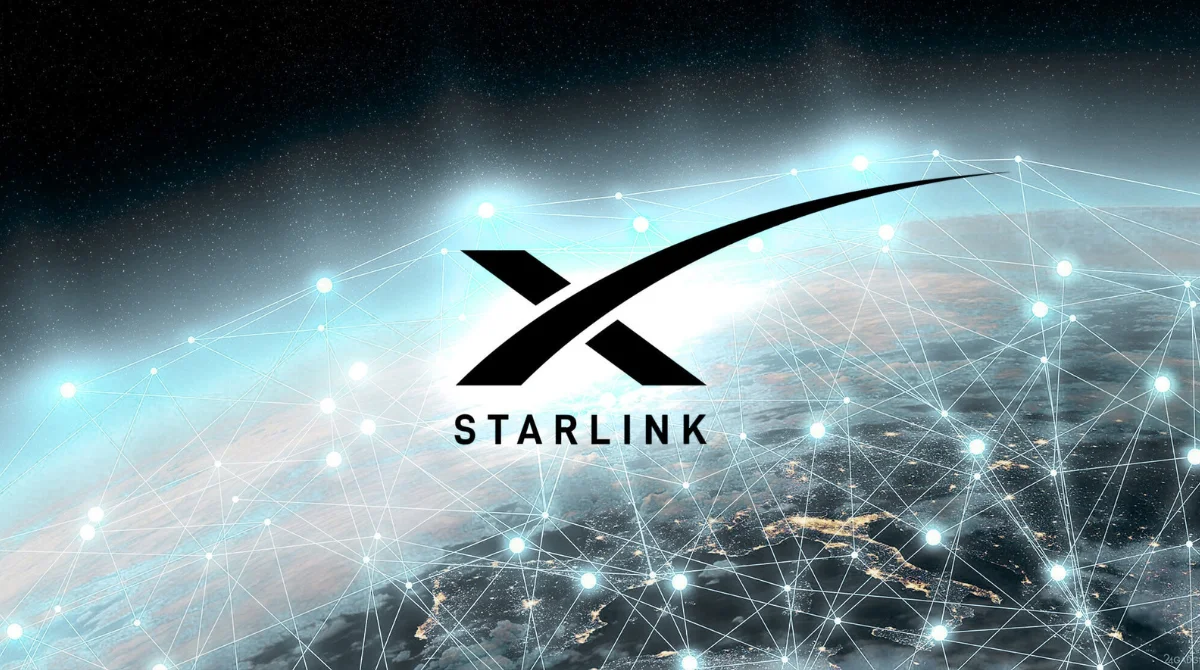In today’s fast-paced digital world, reliable internet access is essential. However, many remote and underserved areas still struggle with connectivity issues. Enter Starlink, a satellite internet service developed by SpaceX, aiming to provide high-speed internet across the globe, especially in regions where traditional internet infrastructure is lacking.
What is Starlink Internet?
Starlink is a satellite internet constellation operated by Starlink Services, LLC, a subsidiary of SpaceX. The service utilizes a network of small satellites in low Earth orbit (LEO) to deliver broadband internet to users worldwide. Unlike traditional satellite internet, which relies on a few large satellites in high geostationary orbit, Starlink’s LEO satellites reduce latency and improve speed, making it a game-changer for internet connectivity.
How Does Starlink Internet Work?
Starlink’s system comprises thousands of small satellites orbiting approximately 550 kilometers above Earth. These satellites communicate with ground transceivers and user terminals, commonly known as “Starlink dishes.” Users install these dishes at their locations, which then connect to the satellites overhead, providing internet access. The low altitude of these satellites ensures faster data transmission and lower latency compared to traditional satellite internet services.
Global Reach and Expansion
Since its initial launches in 2019, Starlink has rapidly expanded its coverage. As of September 2024, the constellation consists of over 7,000 satellites, with plans to deploy up to 12,000 and potentially extend to 34,400 in the future. The service is now available in over 100 countries and territories, including recent expansions to countries like Mongolia, Argentina, Albania, and Somalia.
Starlink’s Expansion in the United States
Starlink’s expansion across the United States has attracted major attention. Elon Musk’s SpaceX successfully launched the service nationwide after receiving the necessary regulatory approvals. The company met all requirements from the Federal Communications Commission (FCC) and collaborated closely with local and state agencies to ensure compliance. With strong infrastructure and broad coverage, Starlink is now offering high-speed satellite internet across even the most remote areas of the U.S.
Expected Pricing in the United States
While official pricing may vary depending on location and service availability, estimates based on global trends suggest the following packages:
- Residential Package: Speeds of 50–250 Mbps
- Monthly Cost: Approximately $125 USD
- One-time Hardware Fee: Around $393 USD
- Business Package: Speeds of 100–500 Mbps
- Monthly Cost: Approximately $339 USD
- Hardware Setup Cost: Around $786 USD
- Mobility Package: Speeds of 50–250 Mbps
- Monthly Cost: Approximately $179 USD
- Hardware Cost: Around $429 USD
These packages are designed to serve a wide range of users—from everyday households to mobile travelers and demanding business environments.
Benefits of Starlink Internet

Starlink has become a big name in the internet world because it offers some major advantages compared to traditional internet services. Here’s what makes it stand out:
High-Speed Internet
Starlink gives you access to internet speeds that can range from 50 Mbps to over 500 Mbps, depending on your location and plan. That means you can stream movies without buffering, enjoy smooth online gaming, and work from home without slow connections. Whether you’re on a video call or downloading large files, the speed is fast and reliable.
Low Latency
One big issue with older satellite internet was the delay (called latency) between sending and receiving data. But Starlink uses satellites that orbit much closer to the Earth, which makes the delay super low. This is great for things like Zoom calls, online meetings, or competitive gaming, where even a small lag can be annoying.
Internet Almost Anywhere
One of Starlink’s biggest goals is to provide internet to places where other services just can’t reach—like rural areas, mountains, deserts, and small islands. Because it uses satellites in the sky instead of ground-based cables, Starlink can reach areas with little to no internet access, helping connect people all around the world.
Easy to Set Up
The Starlink kit comes with a satellite dish, a Wi-Fi router, and all the cables you need. And the best part? You don’t need a technician to install it. You just plug everything in, point the dish towards the sky (the app helps you with that), and you’re ready to go. It’s designed to be user-friendly and simple, even if you’ve never set up internet equipment before.
Challenges and Things to Consider with Starlink
Even though Starlink offers some amazing benefits, it’s not perfect. There are a few things you should keep in mind before choosing it as your internet provider:
Higher Costs
One of the main drawbacks of Starlink is the price. To get started, you need to buy the hardware kit, which includes the dish and router—and that can cost a few hundred dollars. On top of that, the monthly fee is usually higher than what people pay for regular cable or fiber internet. So, while Starlink offers great speed and coverage, it might not be affordable for everyone, especially those on a tight budget.
Regulatory Approvals
Before Starlink can officially offer its service in any country, including the United States, it has to go through government regulations and approvals. These rules are there to make sure the service is safe, legal, and doesn’t interfere with other networks. In most places, this isn’t a big problem, but it can sometimes cause delays or limit full access to the service in certain regions.
Environmental and Space Concerns
Starlink works by sending thousands of small satellites into space. While this is great for coverage, it also brings up some environmental issues. Scientists and astronomers have raised concerns about the large number of satellites affecting the night sky and possibly creating space junk, which could be dangerous for other satellites or future space missions. It’s something SpaceX is working on, but it’s still a challenge worth noting.
How to Set Up Starlink Internet at Home?
Installing Starlink is surprisingly easy and doesn’t require a technician or any complex wiring. When you order Starlink, you’ll receive a kit that includes everything you need to get started:
- A satellite dish (sometimes called “Dishy”)
- A Wi-Fi router
- Mounting base
- Power cables and connectors
Here’s how the setup works:
- Unbox the Kit: Once you get your Starlink package, open it up and check that all the equipment is there.
- Find a Clear Spot: You’ll need to place the dish in an open area with a clear view of the sky—usually on your rooftop, in the backyard, or on a high pole. Trees or buildings can block the signal, so placement is important.
- Use the Starlink App: The app helps you find the best direction and angle for your dish. It even shows you where obstacles might interrupt the signal.
- Plug It In: Connect the dish to the power and the router. Once it’s powered on, the dish automatically adjusts itself to connect to the satellites.
- Connect to Wi-Fi: Use the Starlink app to connect your devices to the network, and you’re ready to browse, stream, or work online.
No drilling or professional installation is needed, and most users can finish the entire setup in less than 30 minutes. It’s designed to be plug-and-play, so anyone can do it—even if you’re not tech-savvy.
The Future of Starlink
Starlink has big plans for the future. With over 4 million subscribers as of September 2024 and projected revenue of $11.8 billion in 2025, it’s clear the service is growing fast. SpaceX aims to expand its satellite network, improve internet speed and reliability, and lower costs to make it more accessible. As technology continues to advance and more countries approve its use, Starlink is set to play a major role in connecting people across the globe—especially in areas where traditional internet services can’t reach. The future of internet access may very well be in the sky.
FAQ
1. How dependable is Starlink Internet?
Starlink Internet is generally reliable, especially in remote or rural areas where traditional broadband options are limited or unavailable. It provides consistent speeds for most users, with minimal downtime. However, its performance can sometimes be affected by factors such as weather conditions (e.g., heavy rain or snow) or obstacles blocking the satellite signal. Despite these occasional challenges, Starlink is becoming increasingly dependable as its satellite network grows and technology improves. Many users have found it to be a solid alternative to traditional internet services, especially in locations that lack access to fiber or cable networks.
2. How fast can Starlink Internet be?
Starlink offers internet speeds ranging from 50 Mbps to over 500 Mbps, depending on your location and the selected package. These speeds are fast enough for streaming HD content, browsing, video conferencing, and online gaming. The speeds vary based on network congestion and geographical factors, but they are generally reliable, offering a significant improvement over traditional satellite internet. As the network grows, speeds are expected to become even more consistent and faster for users worldwide.
3. Who is the owner of Starlink Internet?
Starlink is owned by SpaceX, the private aerospace company founded by Elon Musk. As a subsidiary of SpaceX, Starlink leverages SpaceX’s advanced satellite technology to offer high-speed internet to areas where traditional broadband services are not available. SpaceX operates the Starlink network with the goal of providing global internet coverage, particularly focusing on remote and underserved regions. SpaceX’s expertise in space exploration and satellite deployment helps make Starlink a leading service in satellite internet.
4. Is Starlink Internet suitable for gaming?
Yes, Starlink is great for gaming, especially for users in remote or rural areas where conventional broadband options are unavailable. Thanks to its low Earth orbit (LEO) satellites, Starlink offers lower latency than traditional satellite services, making it ideal for online gaming. Players can enjoy smoother gameplay and less lag, which is critical for real-time interactions. While not as fast as fiber-optic internet, Starlink provides a competitive edge in areas lacking reliable internet infrastructure, including for gaming.
Conclusion
Starlink is not just revolutionizing how we access the internet, but it’s also breaking down barriers that once limited connectivity in remote and underserved regions. With its growing satellite constellation, high-speed service, and easy-to-use setup, Starlink is proving to be a game-changer for individuals, businesses, and communities worldwide. While challenges such as cost, regulatory hurdles, and environmental concerns remain, the potential for a more connected future is undeniable. As the service continues to expand and evolve, Starlink is paving the way for global internet access that can reach even the most isolated corners of the Earth, transforming the digital landscape for the better.
Related Topics:



